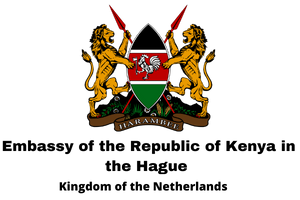Overview
Kenya embarked on a comprehensive programme of economic reforms designed to deregulate the economy and put it on the path of rapid employment generating growth.Sustained effort by the government to tighten fiscal and monetary policies since mid 1993 has been effective in stabilizing the economy and contributing to the revival of economic growth. Annual inflation has been contained to a single digit. Tight control on the budget has been accompanied by tax reforms aimed at reducing the tax rates and broadening the tax base.
On structural reforms, the government has since mid-1993 made significant strides. It has eliminated exchange controls including restrictions on inward portfolio investments and removed all trade restrictions, except for a short list of a few products controlled for health, security and environmental reasons.
Stable macro-economic conditions, liberalised markets, and more operations of the strategic public enterprises are expected to enhance the level and the efficiency of private investment, and result in increased income and job creation.
The government is supporting the Private Sector and especially export-oriented industrialization with a longer term objective of achieving the status of a Newly Industrialised Country (NIC) by the year 2020.
Direction of Trade
African countries continue to be the major market for Kenya’s exports followed by EU. In 2002 the market share of total exports to African countries and EU stood at 48.9% and 28.5% respectively. Among the EU countries UK continues to be the leading market for Kenyan exports with a market share of 39.6% of exports to the region. UK was Kenya’s second leading destination for Kenyan exports after Uganda.
Source of Imports
European Union continues to be the leading source of Kenya’s imports. In the Common Market for Eastern and Southern Africa (COMESA), Uganda, Tanzania and Egypt continue to be Kenya’s major trading partners.
Regional Economic Affiliation
Kenya is an active member of the following:
- Common Market for Eastern and Southern Africa (COMESA)
- East African Community (EAC)
- Inter-governmental Authority on Development (IGAD), while exports from Kenya enjoy preferential market access under the following arrangements:
- EU market under -ACP (EU Cotonou Agreement)
- US under African Growth and Opportunity Act (AGOA) and
- Generalised System of Preferences (GSP)
Business & Investment Environment
The government encourages investment and the Kenyan economy remains open to foreign investors. There are no restrictions on foreign investment, foreign ownership, and repatriation of profits or capital. Investment in the Export Processing Zones (EPZs) and Manufacturing Under-Bond (MUB) enjoys a 10 year tax holiday followed by 25% tax rate for the next 10 years and exempt from import duties, VAT, and Sales Tax.
Foreign ownership in listed Kenyan companies is generally restricted to 40% in the aggregate and 5% for each individual investors.
The Export Processing Zones Authority (EPZA) operates in 39 Zones, (37 private, 2 public).
Investment Opportunities
Investment opportunities exist in nearly all the sectors and especially in agro based industries, machinery and building materials, furniture and paper products, garments and textiles, jewellery and watch manufacture, food processing, cosmetics, pharmaceuticals, electronic goods, solar technology products; IT/Data processing, tourism, banking and financial services, housing, roads, ports, railways and energy sector.
Guarantees to Investors
- The Kenya constitution guarantees against expropriation of private property except for purposes of public use or security and guarantees prompt and fair compensation in the event of such expropriation.
- The Government guarantees repatriation of capital and Profits after payment of the necessary taxes.
- Kenya is a member of Multilateral Investment Guarantee Agency (MIGA), a World Bank affiliate.
- Kenya is also a member of International Centre of Settlement of Investment Disputes (ICSID).
Taxation
Corporate tax presently stands at 30%. Withholding tax on dividends is 5%. However inter-corporate dividend payments between closely held companies are exempt from withholding tax. Dividends received by financial institutions as trading income are not subject to tax.
Value Added Tax (VAT) is levied on the supply of goods imported into or manufactured in Kenya and taxable services imported or provided in Kenya. The standard VAT rate is 16%. Restaurant services are taxable at 16%.
Unprocessed agricultural products are exempt from VAT. Inputs into health care, education and agricultural sectors are zero rated. All exports of goods and services are zero rated.
Excise duties are levied on beer, tobacco products, matches, spirits, wines, mineral water and biscuits (confectioneries).
Personal tax is charged on the income earned in Kenya by any person resident in Kenya. Individual income tax is taxable at rates graduated to 30%. Tax allowances are provided for all individual taxpayers. Taxable income includes all business income, employment income, dividends, interest and property income.
Privatisation
Privatisation and restructuring of parastatals and other state owned companies has progressed well since 1994 and is almost complete.
The government has reduced its share holdings from the Kenya Commercial Bank, National Bank of Kenya, Serena Hotels and Kenya Airways.
Restructuring and reforming of key public enterprises like the Kenya Ports Authority (KPA), Kenya Railways (KR) the Kenya Power and Lighting Company (KPLC) and Kenya Posts and Telecommunications Corporation (KPTC) have already taken place, and as a result we have the Kenya Electricity Generating Company (KemGen) and the Kenya Power and Lighting Company (KPL) respectively and for telecommunications we have Postal Corporation of Kenya, Telkom Kenya Ltd. and the Communication Commission of Kenya (CCK).
Direction of Trade
African countries continue to be the major market for Kenya’s exports followed by EU. In 2002 the market share of total exports to African countries and EU stood at 48.9% and 28.5% respectively. Among the EU countries UK continues to be the leading market for Kenyan exports with a market share of 39.6% of exports to the region. UK was Kenya’s second leading destination for Kenyan exports after Uganda.
Source of Imports
European Union continues to be the leading source of Kenya’s imports. In the Common Market for Eastern and Southern Africa (COMESA), Uganda, Tanzania and Egypt continue to be Kenya’s major trading partners.
